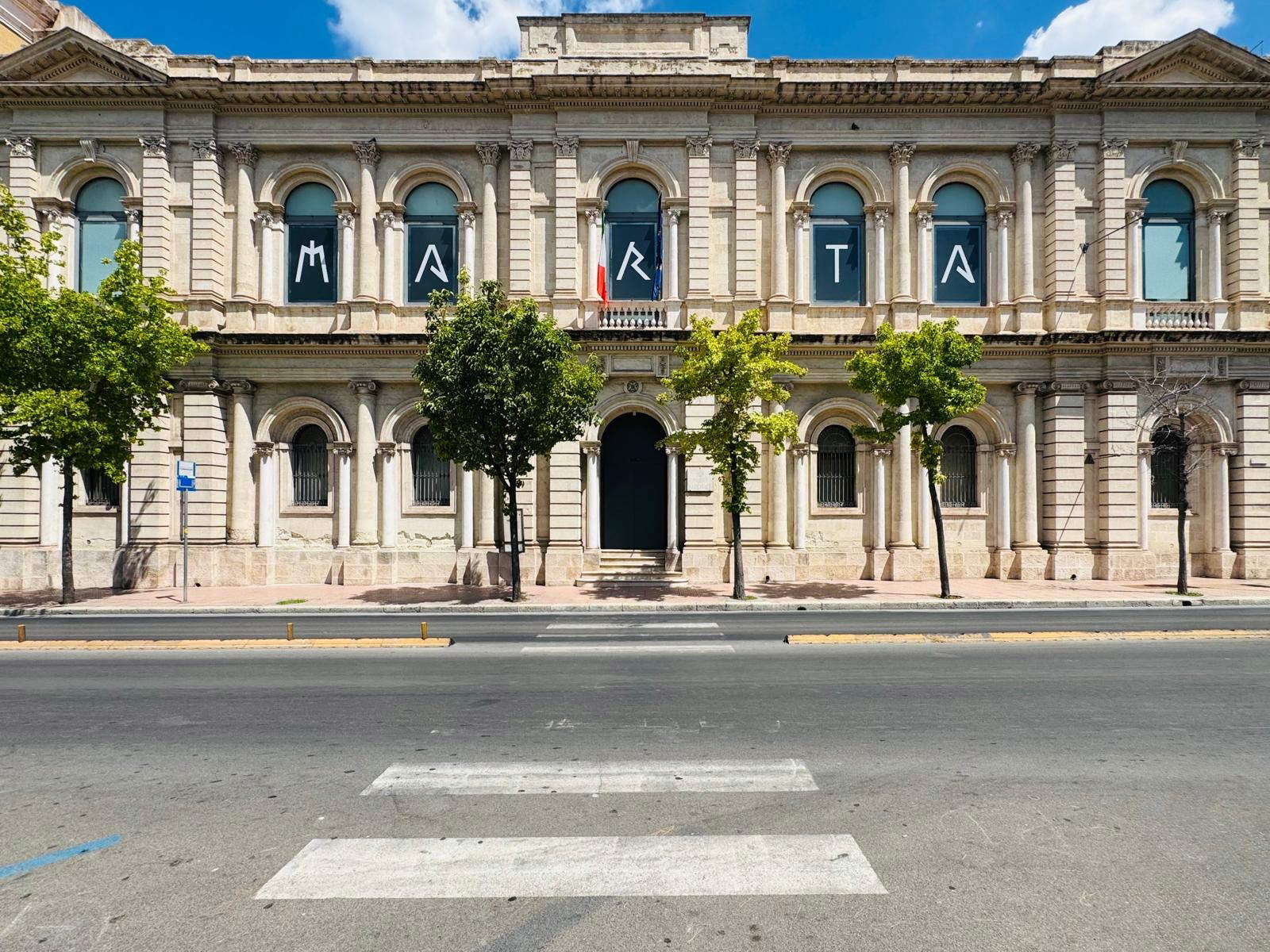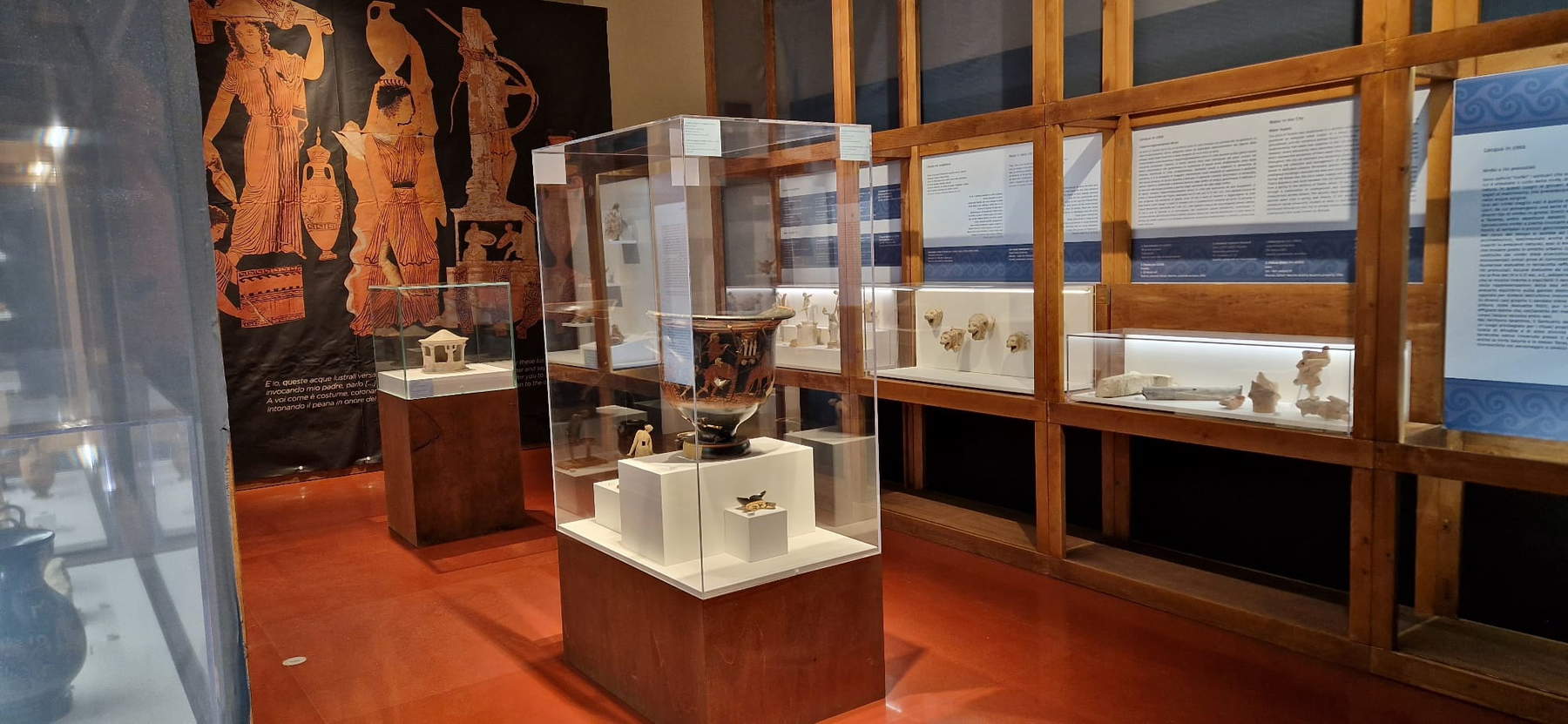MArTa, Taranto’s National Archaeological Museum, is hosting an exhibition titled Arché, the Principle and Water, set up in the spaces of the former Alcantarine Convent and open until Feb. 1, 2026. The exhibition aims to explore the role of fresh water as a natural and cultural element in the development of the territories of Magna Graecia, while offering a never-before-seen overview of the artifacts housed in the MArTA’s repositories. Water, understood as a fundamental resource for life and the daily activities of ancient communities, but also as a symbol and cosmic principle, constitutes the leitmotif of the exhibition and guides the visitor through a path that links nature, culture and technological innovation.
“In the contemporary scenario,” says Stella Falzone, director of the National Archaeological Museum of Taranto, “in which the effects of climate change are increasingly perceptible, in which the need for a fair and equitable use of water resources is felt, it is necessary to start again from the origins, from the most ancient history of the people who inhabited our territory: a theme of memory, awareness and rediscovery of the common past, in order to better build our future. In designing the exhibition on water, it was in fact chosen to recall the term Archè, the principle of everything, dear to Greek philosophy. The exhibition project was born with the aim of presenting to the public, in an articulated, diachronic panorama, and with different narratives and various thematic insights, the forms of the vessels and those objects related to the everyday life of water, and to the different ancient uses, that come from Taranto and neighboring territories. It is a work of ’surfacing’ that allows us to bring to light finds that only for matters of space remain in the dark of deposits, and on occasions such as these they also allow us to expand the narrative to the medieval and modern eras of this layered city.”

The exhibition takes its name from the Greek word “ἀρχή,” archè, which in philosophy indicates the principle, the original substance from which everything derives and to which everything returns. Water is presented not only as a vital resource and collective good, but also as a symbolic and religious element, capable of influencing cultic practices, rites of passage and forms of artistic representation. “A source of life and fertility, a means of purification and passage, a vehicle of relationship with the divine, water proves to be an element capable of structuring both the everyday and the religious and symbolic dimensions,” stressed Massimo Osanna, director general of Italian Museums of the Ministry of Culture, which supported the exhibition.
Taranto, a city of two seas, is also a territory shaped by fresh water, from the springs and citri that flow into the Mar Piccolo, to the courses of the Tara and Cervaro rivers. A landscape in which the presence of water, even when scarce, has determined forms of adaptation, engineering solutions and cultural meanings. The exhibition offers the visitor a narrative that weaves together archaeological finds, contemporary photographs and new readings of the heritage held by MArTA, much of it from the deposits.
The layout is divided between the Temporary Art Compass in the museum lobby and the Temporary Exhibitions Hall on the ground floor, in constant dialogue with the permanent collection distributed on the two upper floors. At the entrance, in the large crystal display case in the lobby, a selection of water-related containers can be seen, restoring the variety of forms and functions attributed over the centuries. Some works have been temporarily moved from the rooms of the permanent collection on the ground floor to be included in new thematic paths, capable of offering new interpretations on the relationships between ritual practices, figurative decorations and everyday uses.

Among the exhibits are hydria and louterion from the Hellenistic period, trozzelle typical of the Messapic tradition, amphorae and pilgrim flasks from the medieval period, to more recent evidence of Grottaglie ceramic production. The selection also includes terracotta pipes documenting the water supply system in the absence of large rivers, when water was obtained from wells dug into the calcarenitic bank down to the water table. There is no shortage of architectural elements such as dripstones decorated with a lion protome, combining technical function with apotropaic and aesthetic value.
The route extends to the Roman period, with examples of the hydraulic engineering works that characterized the area. Remains of aqueducts in opus reticulatum, still visible along Corso Italia, testify to the ability to capture and distribute water. The display also recalls the complex rainwater collection systems in the compluvia and impluvia of the domus, as well as the use of water in public buildings such as nymphaeums and baths, with particular reference to the Pentascinensi Baths.
The exhibition is part of a line of research that MArTA has been pursuing for some time: that of the “surfacing” of materials kept in storage. Much of the archaeological heritage, for reasons of space, is not on permanent display, but is enhanced through thematic exhibitions that allow the public to become acquainted with otherwise invisible objects.
“The initiative, conceived and implemented entirely by the National Archaeological Museum of Taranto,” emphasizes Massimo Osanna, director general of Italian Museums, “reaffirms the desire to enhance the potential of a heritage that is largely still kept in storage. The exhibition, composed exclusively of artifacts from the MArTA collections, in fact stems from the need to restore visibility to materials hitherto inaccessible to the public, in keeping with one of the main missions of the General Directorate for Museums: to promote, through projects spread throughout the entire national museum system, the knowledge and enhancement of this extraordinary ’invisible’ heritage. Particular attention is paid to cultic practices and mythical tales related to water, which in Taranto find attestations of extraordinary richness.”
 |
| "Arché, the principle and water": an exhibition on the role of water in Magna Graecia at MArTA in Taranto |
Warning: the translation into English of the original Italian article was created using automatic tools. We undertake to review all articles, but we do not guarantee the total absence of inaccuracies in the translation due to the program. You can find the original by clicking on the ITA button. If you find any mistake,please contact us.